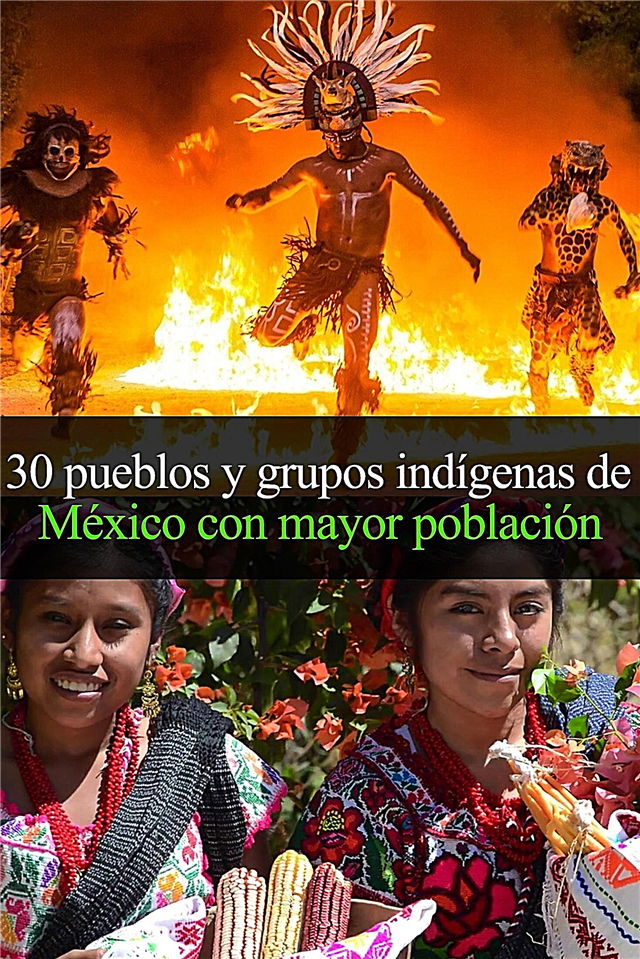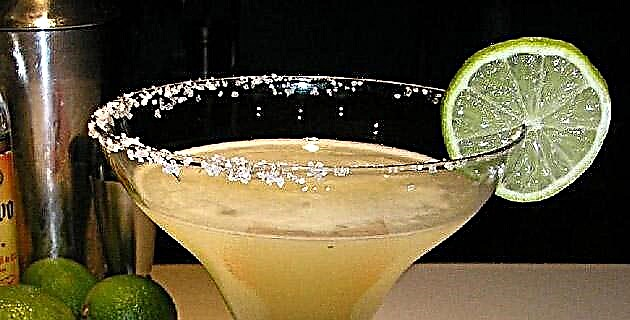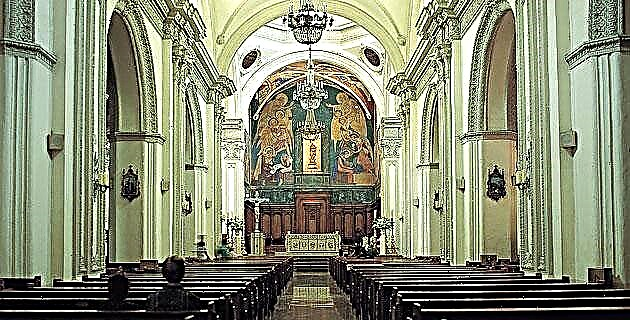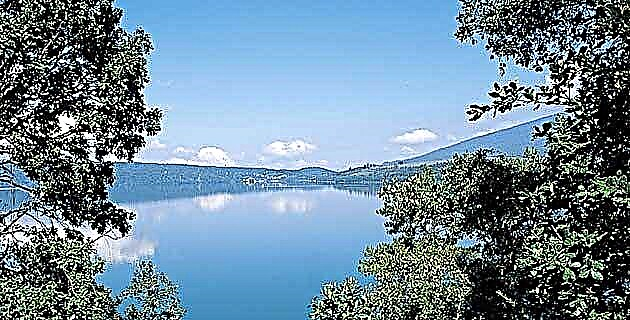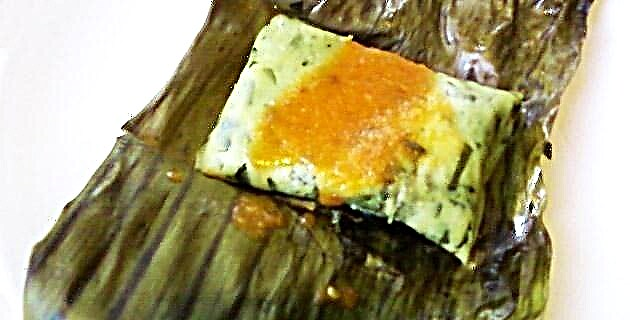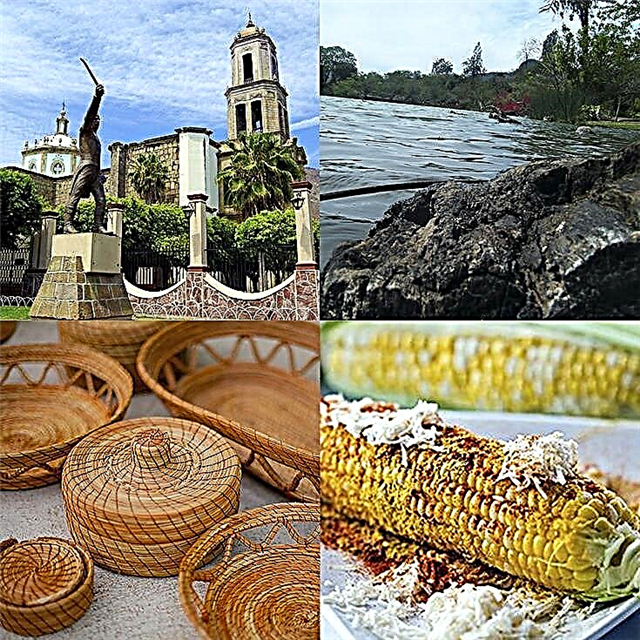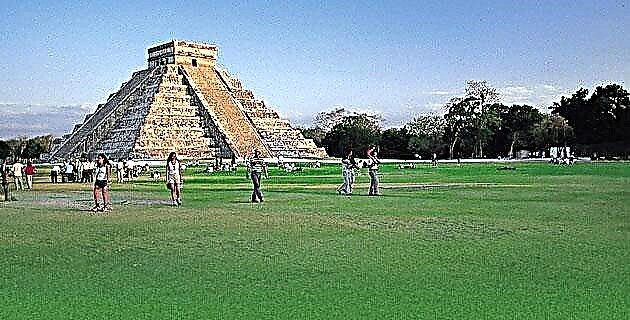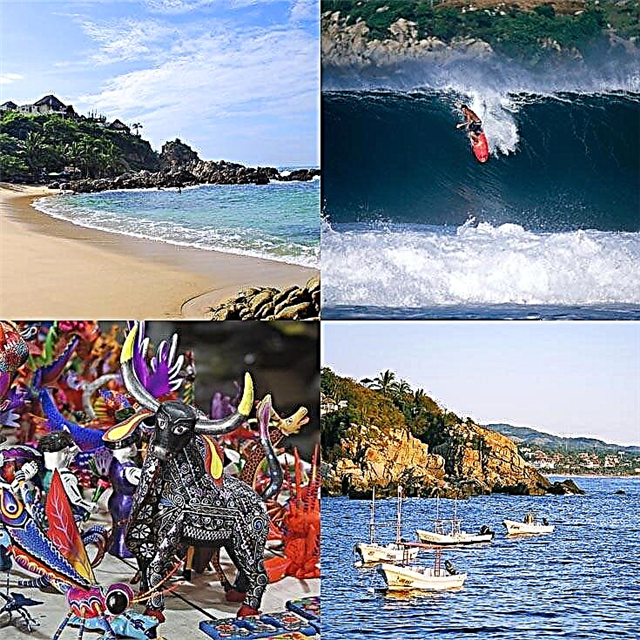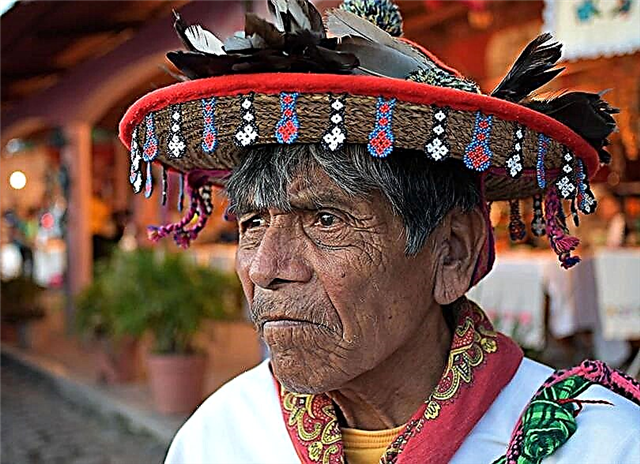Mexico is one of the countries in the world with the greatest ethnic diversity, human conglomerates with a linguistic, spiritual, cultural, gastronomic and other heritage that enriches the Mexican nation.
We invite you to know the particularities of the most important indigenous groups and peoples of Mexico, in an interesting journey through their habitats, customs, traditions and legends.
1. Nahuas
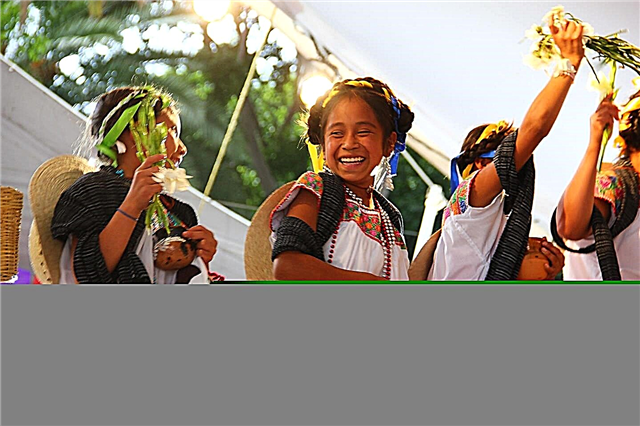 The group of Nahua peoples leads the indigenous Mexican ethnic groups in population with 2.45 million inhabitants.
The group of Nahua peoples leads the indigenous Mexican ethnic groups in population with 2.45 million inhabitants.
They were called Aztecs by the Spanish and have the Nahuatl language in common. Anthropologists point out that they formed 7 peoples of the same nation: Aztecs (Mexica), Xochimilcas, Tepanecs, Chalcas, Tlahuicas, Acolhuas and Tlaxcalans.
Before the arrival of the Spanish they constituted a powerful conglomerate throughout the Valley of Mexico, with an impressive warlike, social and economic influence.
Their current communities live in the south of the DF, especially in the Milpa Alta Delegation and in enclaves of the states of Mexico, Puebla, Morelos, Tlaxcala, Hidalgo, Veracruz, Oaxaca and Guerrero.
Nahuatl is the indigenous language with the greatest influence on Mexican Spanish. The nouns tomato, comal, avocado, guacamole, chocolate, atole, esquite, mezcal and jícara, are of Nahua origin. The words achichincle, tianguis, cuate, straw, kite, corn and apapachar also come from the Nahua.
In 2014, the play Xochicuicatl cuecuechtli, the first opera composed in the Nahuatl language, was premiered in Mexico City. It is based on the sung poem of the same name that Bernardino de Sahagún compiled in his collection of Mexican Songs.
Traditions and customs of the Nahuas
Its main ceremonies are celebrated on the winter solstice, in Carnival, on the Day of the Dead and on the occasion of planting and harvesting.
Their fundamental space for economic exchange and social interaction has been the tianguis, the street market that they set up in Mexican towns and cities.
His painting is one of the best known in Mexico made on amate paper, wood and ceramic.
The concept of family of the Nahuas goes far beyond the family nucleus and being single and widowed are not well regarded.
2. Mayans
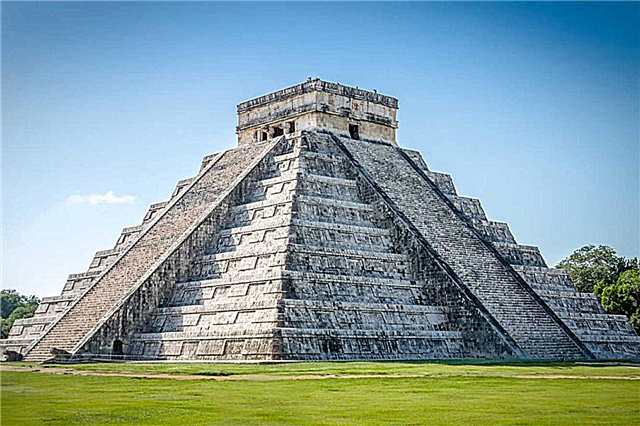 Every chronicle or monograph of the indigenous peoples of Mexico gives the Mayans special importance because of the marvelous culture they created in Mesoamerica.
Every chronicle or monograph of the indigenous peoples of Mexico gives the Mayans special importance because of the marvelous culture they created in Mesoamerica.
This civilization developed 4 millennia ago in Guatemala, in the current Mexican states of Yucatán, Campeche, Quintana Roo, Tabasco, and Chiapas, and in the territories of Belize, Honduras, and El Salvador.
They have a core language and a large number of variants, the most important being the Yucatec Mayan or Peninsular Mayan.
Their direct descendants group in Mexico a current population of 1.48 million indigenous people, who live in the states of the Yucatan Peninsula.
The first Mayans arrived in Mexico from El Petén (Guatemala), settling in Bacalar (Quintana Roo). Some of the words that the Mayan gave to the Spanish are cacao, cenote, chamaco, cachito and patatús.
Among the names of indigenous peoples of the world, that of the Maya is pronounced with admiration for their advanced culture in architecture, art, mathematics, and astronomy.
The Maya were probably the first people of humanity to understand the notion of zero in mathematics.
Traditions and customs of the Mayans
Its remarkable architecture and art were reflected in pyramids, temples and stelae with explicit messages and allegories in sites such as Chichén Itzá, Palenque, Uxmal, Tulum and Cobá.
The sophistication of its calendar and its precise astronomical records are astonishing.
Its traditions include the Mayan ball game and the worship of cenotes as divine bodies of water. They practiced human sacrifices because they believed that they pleased and fed the gods.
One of its main Mayan ceremonies is the Xukulen, dedicated to Ajaw, creator god of the universe.
3. Zapotecs
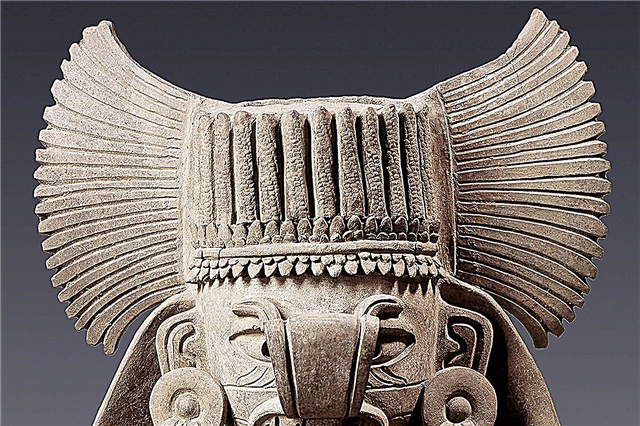 They form the third Mexican indigenous town in population with 778 thousand inhabitants concentrated in the state of Oaxaca, with also smaller communities in neighboring states.
They form the third Mexican indigenous town in population with 778 thousand inhabitants concentrated in the state of Oaxaca, with also smaller communities in neighboring states.
The main Zapotec enclaves are in the Oaxaca Valley, the Zapotec Sierra and the Isthmus of Tehuantepec.
The name “Zapotec” comes from the Nahuatl word “tzapotēcatl”, which the Mexica used to define them as the “inhabitants of the place of the zapote”.
The Zapotec language has many variants and belongs to the Ottoman language family.
The most famous Zapotec is the “Benemérito de las Américas”, Benito Juárez.
The original Zapotecs practiced polytheism and the main members of their Olympus were Coquihani, god of the sun and the sky, and Cocijo, god of rain. They also worshiped an anonymous figure in the form of a bat-jaguar that is believed to be the deity of life and death, in the style of the bat god Camazotz in the Mayan religion.
The Zapotecs developed an epigraphic writing system around 400 BC, one related primarily to state power. The main Zapotec political center was Monte Albán.
Traditions and customs of the Zapotecs
The Zapotec culture gave the Day of the Dead its mystical connotation of the meeting of two worlds that Mexico currently has.
La Guelaguetza is its main celebration and one of the most colorful in Mexico in terms of dance and music.
The central festival of the Guelaguetza takes place in the Cerro del Fortín, in the city of Oaxaca, with the participation of delegations from all regions of the state.
Another Zapotec tradition is the Night of Candles to worship the patrons of cities, towns and neighborhoods.
4. Mixtecos
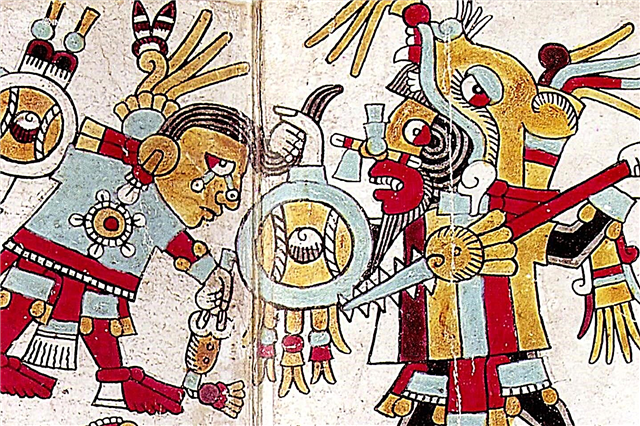 The Mixtecos represent the fourth Mexican native population with 727 thousand indigenous people. Its historical geographical space has been the Mixteca, an area of southern Mexico shared by the states of Puebla, Guerrero and Oaxaca.
The Mixtecos represent the fourth Mexican native population with 727 thousand indigenous people. Its historical geographical space has been the Mixteca, an area of southern Mexico shared by the states of Puebla, Guerrero and Oaxaca.
It is one of the Mexican Amerindian towns with the oldest traces, so much so that they predate the beginning of corn cultivation.
The Spanish conquest of the Mixteca was relatively easy due to the collaboration provided by the rulers in exchange for preserving privileges.
This region enjoyed relative prosperity during the viceroyalty due to the high value of the large cochineal used as a dye.
The westernization or Spanishization of the Mixtecos, together with the atomization of their territory, led this people to preserve a community identity rather than an ethnic one.
The so-called Mixtec languages are linguistic varieties of Ottoman origin. Historical processes and the strong migratory trend of Mixtecs brought their languages to almost all Mexican states.
There are 3 Mixtec languages associated with the Mixtec geographic space: Coastal Mixtec, Low Mixtec and Upper Mixtec.
Traditions and customs of the Mixtecs
The main economic activity of the Mixtecs is agriculture, which they practice in small plots that are transferred from generation to generation.
The Mixtec spiritual tradition has an animistic component, postulating that all people, animals, and inanimate things have souls.
Their most important festivals are the patronal festivals in which they reaffirm their relationships with their families and members of their community.
The relative poverty of their lands led to a significant migration to other Mexican regions and the United States.
5. Otomí people
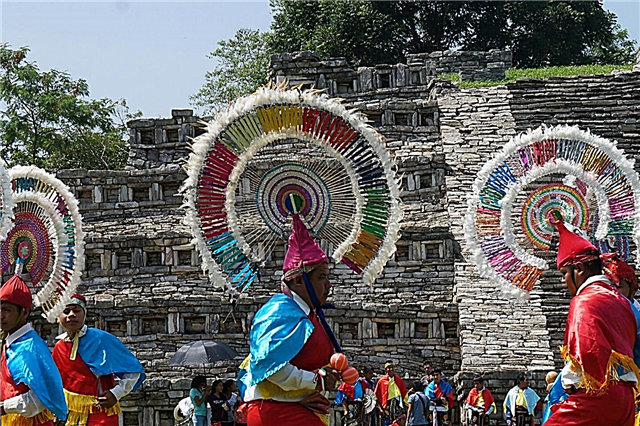 There are 668 thousand Otomi in Mexico, ranking fifth among the indigenous peoples with the largest population. They live in a fragmented territory in the states of Mexico, Hidalgo, Querétaro, Michoacán, Guanajuato and Tlaxcala.
There are 668 thousand Otomi in Mexico, ranking fifth among the indigenous peoples with the largest population. They live in a fragmented territory in the states of Mexico, Hidalgo, Querétaro, Michoacán, Guanajuato and Tlaxcala.
It is estimated that 50% speak Otomí, although linguistic diversification makes communication between speakers from different states difficult.
They forged alliances with Hernán Cortés during the conquest, especially to free themselves from the domination of other ethnic groups. They were evangelized by the Franciscans in colonial times.
They communicate with each other in Otomí, which along with Spanish is one of the 63 recognized indigenous languages in Mexico.
In reality, Otomí is a linguistic family whose number of variants changes according to the opinion of specialists. The common trunk of all is the proto-Otomí, which is not a language with an original source, but a hypothetical language reconstructed with historical linguistic techniques.
Traditions and customs of the Otomi
The Otomi practice rites for the improvement of crops and celebrate the Day of the Dead, the feasts of Señor Santiago and other dates on the Christian calendar.
Its choreographic tradition is headed by the dances of Acatlaxquis, Santiagos, Moros, Matachines and Negritos.
The Acatlaxquis dance is one of the most popular. It is executed by men who carry long reeds and reeds like flutes. Its main stage is the patron saint festivities of the towns.
Among the Otomi, it is up to the groom's family to request and negotiate the bride's hand with his family group.
6. Totonacas
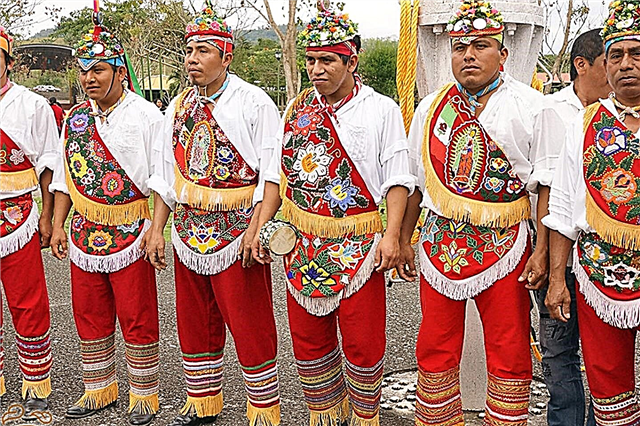 The Totonac civilization arose in the current states of Veracruz and Puebla during the late classical period, approximately in the year 800 AD. Its imperial capital and main urban center was El Tajín, whose archaeological ruins declared a World Heritage Site contain pyramids, temples, buildings and courts for the ball game, which illustrate the splendor reached by the Totonac culture.
The Totonac civilization arose in the current states of Veracruz and Puebla during the late classical period, approximately in the year 800 AD. Its imperial capital and main urban center was El Tajín, whose archaeological ruins declared a World Heritage Site contain pyramids, temples, buildings and courts for the ball game, which illustrate the splendor reached by the Totonac culture.
Other important Totonac centers were Papantla and Cempoala. In these two cities and in El Tajín they left evidence of their monumental clay architecture, their varied ceramics and their stone sculptural art.
Currently, 412,000 indigenous people of Totonac origin live in Mexico, living in Veracruz and Puebla.
The main deity of the town was the sun, to whom they offered human sacrifices. They also worshiped the Goddess of Corn, whom they considered the wife of the sun and gave her animal sacrifices believing that she detested human suffering.
Traditions and customs of the Totonacs
The Rite of the Flyers, one of the most famous in Mexico, was incorporated into the Totonac culture during the post-classical era and thanks to this people the ceremony survived in the Sierra Norte de Puebla.
The traditional costume for women is the quechquémetl, a long, wide and embroidered dress.
Its typical houses have a single rectangular room with a palm or straw roof, in which the whole family lives.
7. Tzotzil people
The Tzotziles form an indigenous people from Chiapas of a Mayan family. They are distributed in some 17 municipalities of Chiapas, with San Cristóbal de las Casas being its main center of life and activity.
Its region of influence can be divided between the Highlands of Chiapas, with mountainous topography and cold climate, and the lower zone, less rugged and with a tropical climate.
They call themselves the "bats iviniketik" or "true men" and are part of one of 10 Amerindian groups in Chiapas.
Currently 407,000 Tzotziles live in Mexico, almost all of them in Chiapas, where they are the largest indigenous people.
Their language belongs to the Mayan speaking family and descends from Proto-Chol. Most of the indigenous people have Spanish as their second language.
The Tzotzil language is taught in some primary and secondary schools in Chiapas.
Pope Francis authorized in 2013 the translation into Tzotzil of the prayers of the Catholic liturgy, including those used at masses, weddings, baptisms, confirmations, confessions, ordinations and extreme unctions.
Traditions and customs of the Tzotziles
The Tzotziles believe that each person has two souls, a personal one located in the heart and blood and another associated with an animal spirit (coyote, jaguar, ocelot and others). What happens to the animal impacts the individual.
The Tzotziles do not eat sheep, which they consider to be a sacred animal. The indigenous leaders are generally elders who must prove supernatural powers.
Traditional female clothing is a huipil, indigo-dyed skirt, cotton sash, and shawl. The men wear shorts, shirt, neckerchief, wool poncho and hat.
8. Tzeltales
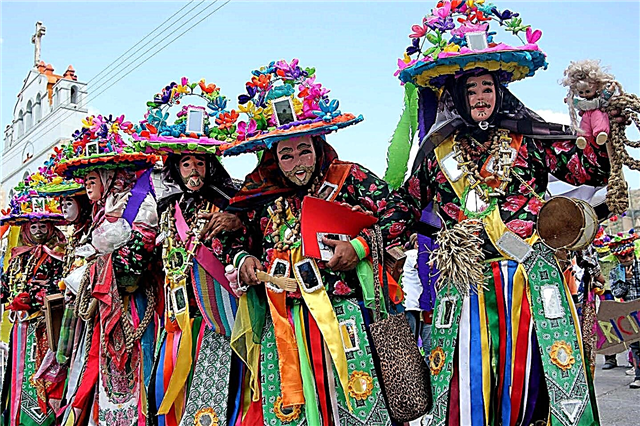 The Tzeltales are another of the indigenous peoples of Mexico of Mayan origin. They live in the mountainous region of Chiapas and number 385,000 individuals, who are distributed in communities governed by the political system of "uses and customs", which seeks to respect their organization and traditions. Their language is related to Tzotzil and the two are very similar.
The Tzeltales are another of the indigenous peoples of Mexico of Mayan origin. They live in the mountainous region of Chiapas and number 385,000 individuals, who are distributed in communities governed by the political system of "uses and customs", which seeks to respect their organization and traditions. Their language is related to Tzotzil and the two are very similar.
Many elders speak only Tzeltal, although most children speak in Spanish and in the native language.
The cosmology of the Tzeltal people is based on the communion of body, mind and spirit, interacting with the world, community and the supernatural. Diseases and ill health are attributed to mismatches between these components.
Healing focuses on restoring the balance between body, mind and spirit, in the hands of shamans, who counteract imbalances and bad influences with rituals.
In their community organization they have mayors, mayordomos, lieutenants and rezadores, who have assigned functions and rituals.
Traditions and customs of the Tzeltals
The Tzeltales have rites, offerings, and festivals, the most important of which are the patronal ones.
Carnival also has a special symbolism in some communities such as Tenejapa and Oxchuc.
The main figures of the festivities are the mayordomos and the lieutenants.
The typical costume for Tzeltal women is a huipil and a black blouse, while men do not usually wear traditional clothing.
Tzeltal crafts consist mainly of textile pieces woven and decorated with Mayan designs.
9. Mazahuas
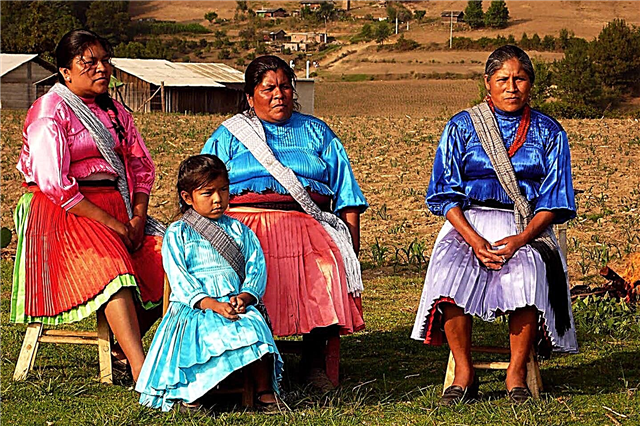 The history of the Mexican indigenous peoples indicates that the Mazahuas originated from the Nahua migrations towards the end of the Postclassic period and from the cultural and racial fusion of Toltec-Chichimec communities.
The history of the Mexican indigenous peoples indicates that the Mazahuas originated from the Nahua migrations towards the end of the Postclassic period and from the cultural and racial fusion of Toltec-Chichimec communities.
The Mazahua people of Mexico are made up of about 327 thousand indigenous people who live in the states of Mexico and Michoacán, where they are the most numerous Amerindians.
Its main historical settlement has been the Mexican municipality of San Felipe del Progreso.
Although the exact meaning of the term "mazahua" is not known, some specialists affirm that it comes from Nahuatl and that it means: "where there are deer."
The Mazahua language belongs to the Ottomangue family and has 2 variants, the western or jnatjo and the eastern or jnatrjo.
There is also a Mazahua minority in Coahuila. In the city of Torreón lives a community of about 900 indigenous people made up of Mazahuas who emigrated north during the 20th century.
Mexico, Michoacán and Coahuila are the states that recognize this people as their own ethnic group.
Traditions and customs of the Mazahuas
The Mazahua people have preserved their cultural manifestations such as worldview, ritual practices, language, oral tradition, dance, music, clothing, and crafts.
Traditionally, the native language has been the main means of communication, although fewer and fewer children speak it.
The rites and festivities have an organization in which the main figures are the prosecutors, mayordomos and mayordomitos. They usually build houses and carry out major jobs in days called “faenas” in which the entire community participates.
10. Mazatecos
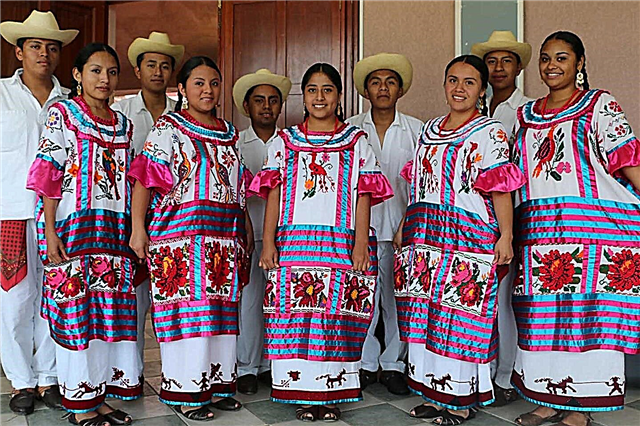 The Mazatecos are part of a Mexican ethnic group that lives in the north of Oaxaca and in the south of Puebla and Veracruz, made up of some 306 thousand indigenous people.
The Mazatecos are part of a Mexican ethnic group that lives in the north of Oaxaca and in the south of Puebla and Veracruz, made up of some 306 thousand indigenous people.
They became known worldwide thanks to María Sabina (1894-1985), a Mazatec Indian who gained international celebrity for the open, ceremonial and curative use of hallucinogenic mushrooms.
Its traditional terroir has been the Sierra Mazateca, in Oaxaca, divided into Mazateca Alta and Mazateca baja, the first cold and temperate and the second, warmer.
During the period 1953-1957, the construction of the Miguel Alemán dam drastically modified the habitat of the Mazatecs, causing the migration of several tens of thousands of indigenous people.
The Mazatec languages, although closely related, do not constitute a linguistic unit. The most widely spoken variant is the Mazatec of Huautla de Jiménez, Oaxacan Magic Town and the birthplace of María Sabina.
This population is one of the main Mexican destinations for psychedelic tourism, made up of travelers interested in learning about new hallucinogenic experiences.
Traditions and customs of the Mazatecs
The main cultural features of the Mazatecs are their traditional medicine and their ceremonial practices linked to the consumption of psychoactive mushrooms.
Its most important economic activities are fishing and agriculture, especially sugar cane and coffee.
Its rites and celebrations are related to the Christian and agricultural calendars, in which the dates of sowing and harvest and the requests for rain stand out.
A therapeutic ritual is the consumption of hallucinogenic mushrooms to enter a trance and thereby resolve personal and group conflicts.
11. Huastecos
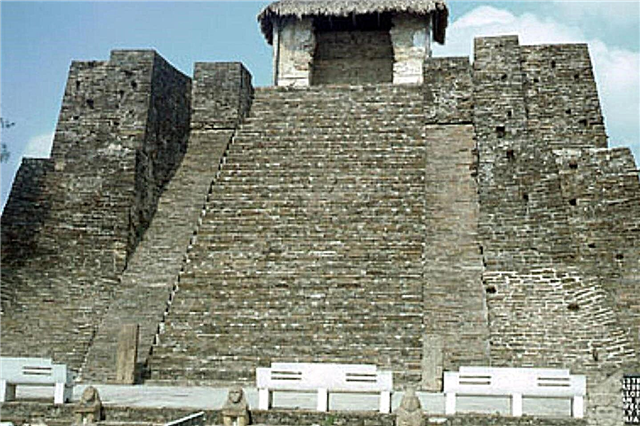 The Huastecos descend from the Mayans and inhabit La Huasteca, a wide region that includes the north of Veracruz, the south of Tamaulipas and areas of San Luis Potosí and Hidalgo and to a lesser extent, Puebla, Guanajuato and Querétaro.
The Huastecos descend from the Mayans and inhabit La Huasteca, a wide region that includes the north of Veracruz, the south of Tamaulipas and areas of San Luis Potosí and Hidalgo and to a lesser extent, Puebla, Guanajuato and Querétaro.
The Huasteca is usually identified with the state, speaking of Huasteca Veracruzana, Huasteca Potosina and so on.
Huasteco or Tenex is a Mayan language and the only non-extinct language of the Huastecan branch, after confirming the disappearance of the Chicomuselteco language in Chiapas in the 1980s.
It is also the only Mayan language spoken outside the traditional historical space of the Mayans, made up of the Yucatan Peninsula, Guatemala, Belize and El Salvador.
The vast territory of La Huasteca shows a great ecological variety with coasts, rivers, mountains and plains. However, the Huastecos have always preferred the warm climate since they usually live below 1000 meters above sea level. The basis of its economy and food is corn.
There are currently 227,000 Huastec Indians in Mexico.
Traditions and customs of the Huastecos
This town is known by the huapango or son huasteco, a musical genre among the most appreciated in Mexico. It includes singing and zapateado.
Of the Huasteca choreographies, the dance of the disguised that is danced at the Candelaria festivities and the dance of the mecos, typical of Carnival, stand out.
The typical costume of the Huastecas is a pánuco on a plain blouse and a wide and long skirt, with a predominance of white in all the pieces, a characteristic feature in the clothing of the region of the Gulf of Mexico.
12. Choles
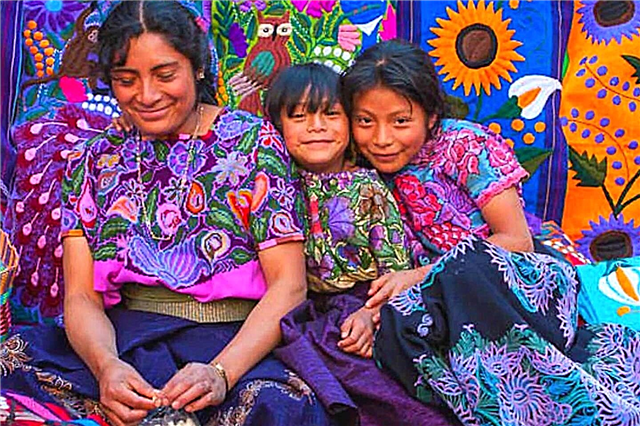 The Choles form an indigenous people of Mayan origin that live in the Mexican states of Chiapas, Tabasco and Campeche and in Guatemala. They call the foreigner or foreigner “kaxlan”, be he an encomendero, landowner, farmer, evangelizer, rogue or member of the government, a word that means “does not belong to the community”.
The Choles form an indigenous people of Mayan origin that live in the Mexican states of Chiapas, Tabasco and Campeche and in Guatemala. They call the foreigner or foreigner “kaxlan”, be he an encomendero, landowner, farmer, evangelizer, rogue or member of the government, a word that means “does not belong to the community”.
His worldview revolves around corn, a sacred food given by the gods. They consider themselves "men created from corn."
They speak the Chol language, a Mayan language with two dialects, the Chol from Tila and the Chol from Tumbalá, both associated with municipalities in Chiapas. It is a language very similar to classical Mayan.
Its numerical system is vigesimal as was usual in the Mesoamerican indigenous peoples, whose reference for numbering was the 20 fingers of the human body.
They live from livestock, pig farming and agriculture, growing corn, beans, sugar cane, coffee and sesame.
Its natural environment is of mighty rivers that form beautiful waterfalls such as Agua Azul and Misol-Ha. There are 221 thousand choles in Mexico.
Traditions and customs of the Choles
The Choles attach great importance to marriage and tend to marry between relatives, which is why they are a people with a high level of inbreeding.
Men are engaged in agricultural and livestock activities, while women help by harvesting fruits, vegetables and herbs in small family gardens.
Its main festivities are related to the agricultural calendar in a mixture with Christian beliefs. Corn has a preponderant position.
In the preparation of the land, the death of the corn god is celebrated, while the harvest is the resurrection of the food deity.
13. Purepechas
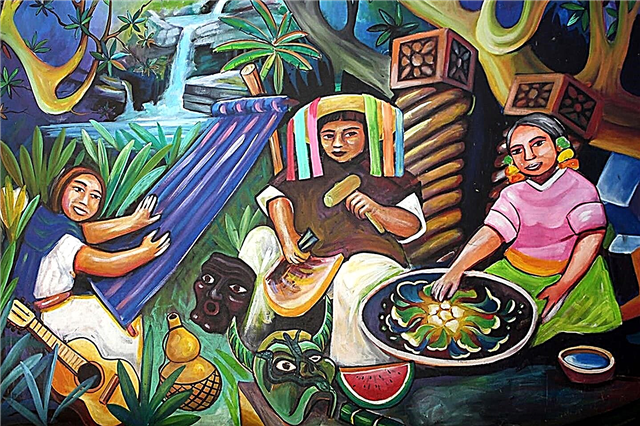 This Mexican Amerindian people is made up of 203 thousand indigenous people who live in the Tarasca or Purépecha plateau, in the state of Michoacán. In Nahuatl they were known as Michoacanos or Michoacas and their habitat extended to Guanajuato and Guerrero.
This Mexican Amerindian people is made up of 203 thousand indigenous people who live in the Tarasca or Purépecha plateau, in the state of Michoacán. In Nahuatl they were known as Michoacanos or Michoacas and their habitat extended to Guanajuato and Guerrero.
Their current communities include 22 Michoacan municipalities and migratory flows have created establishments in Guerrero, Guanajuato, Jalisco, the state of Mexico, Colima, Mexico City and even the United States.
They practiced a polytheistic religion during pre-Hispanic times in which a masculine creative principle, a feminine one and a messenger or "divine breath" coexisted, a trilogy associated with the father, mother and son.
The symbol of the masculine creative principle was the sun, the moon represented the feminine creative principle and Venus, the messenger.
Traditions and customs of the Purépecha
The Purépecha have a flag formed by 4 quadrants of purple, sky blue, yellow and green, with an obsidian figure in the center that represents the sun god.
The purple symbolizes the Ciénaga de Zacapu region, the blue the lake region, the yellow the Cañada region and the green mountain forests.
One of their main festivities is the Night of the Dead, in which they celebrate the lives of their ancestors and remember the good times lived by their side.
One of its musical manifestations is the pirekua, a balled song with a sentimental and nostalgic tone.
14. Chinantecs
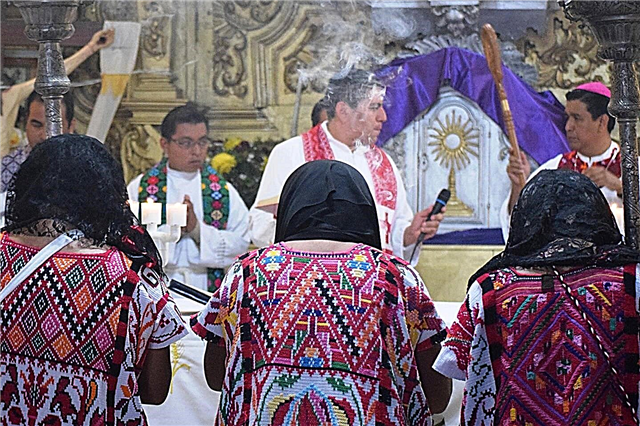 The Chinantecs or Chinantecos live in an area of Chiapas known as Chinantla, a socio-cultural and geographical region in the north of the state that includes 14 municipalities. Its population totals 201 thousand indigenous Mexicans.
The Chinantecs or Chinantecos live in an area of Chiapas known as Chinantla, a socio-cultural and geographical region in the north of the state that includes 14 municipalities. Its population totals 201 thousand indigenous Mexicans.
The language is of Ottoman origin and is made up of 14 variants, a non-precise number since it depends on the linguistic criteria used.
The Chinantec language has a VOS structure (verb - object - subject) and the number of tones varies from one dialect to another.
The origin of the Chinantecs is unknown, and it is believed that they migrated to their current location from the Tehuacán valley.
80% of the population was exterminated by diseases carried by the Spanish and the conquest forced the rest to migrate to the highlands. During the colony, the Chinantla region had some economic importance due to the cochineal and cotton.
Traditions and customs of the Chinantecs
The stone soup or broth, an exotic Mexican preparation in which food is cooked by contact with incandescent stones, is of Chinantec origin.
According to the tradition of this indigenous people, the soup is prepared by men and only with stones chosen by the elders. It is made in gourds and not in metal or ceramic pots.
Chinantec women wear gaudy embroidered dresses with ornate round necklines. The main festivities are the management holidays, Carnival and the New Year.
15. Mixes
The Mixes constitute another Mexican indigenous people settled in Oaxaca. There are about 169 thousand indigenous people who live in the Sierra Mixe, the Oaxacan mountain range of the Sierra Madre del Sur.
They speak Mixe, a language belonging to the Mixe-Zoquean family. There are 5 variants or dialects associated with geography: Northern Mixe Alto, Southern Mixe Alto, Middle Eastern Mixe, Midwest Mixe and Low Mixe. Some linguists add a later Mixe spoken in communities of the municipality of Totontepec.
Most of the Mixe communities are of agrarian organization, operating independently of each other in communally owned territories.
In the municipality of San Juan Guichicovi the lands are exceptionally ejidos and in the municipalities of San Juan Cotzocón and San Juan Mazatlán the 2 forms of tenure coexist (communal property and ejidos).
Traditions and customs of the Mixes
The Mixes still use the house-to-house marketing system, selling or trading food products or articles of clothing for other goods such as coffee, an exchange system that works in conjunction with the village markets.
Men carry the greatest burden in managing livestock, hunting, fishing, and agriculture, with women assisting in weeding, harvesting, and storage. They also take care of the children's upbringing and food.
The Mixes believe that the spirits of the dead continue to live in the same neighborhood and perform rituals during funerals so that they do not harm the living.
16. Tlapanecos
With 141 thousand individuals, the Tlapanecos rank 16th among the indigenous peoples of Mexico in population.
The term "Tlapaneco" is of Nahua origin and means "who has a dirty face", a pejorative meaning that these indigenous people have tried to change for the word Me'phaa, which expresses "the one who is an inhabitant of Tlapa." They live in the center-south of the state of Guerrero.
The Tlapanec language is of Ottoman roots and for a long time was unclassified. Later it was assimilated to the Subtiaba language, now extinct and later it was included in the Ottoman family.
There are 8 idiomatic variants that are tonal, which means that the word modifies its meaning according to the tone with which it is pronounced. The numbering is vigesimal.
The base of their diet is corn, beans, squash, bananas and chili peppers, with hibiscus water as their main drink. In coffee growing areas, the infusion is a traditional drink.
Traditions and customs of the Tlapanecos
The clothing of the Tlapanecos is influenced by their Mixtec and Nahua neighbors. Typical female clothing consists of a blue wool vest, a white blouse with colored threads on the neck and a colorful skirt.
The main crafts vary from community to community and include lambswool textiles, woven palm hats, and clay grills.
17. Tarahumara
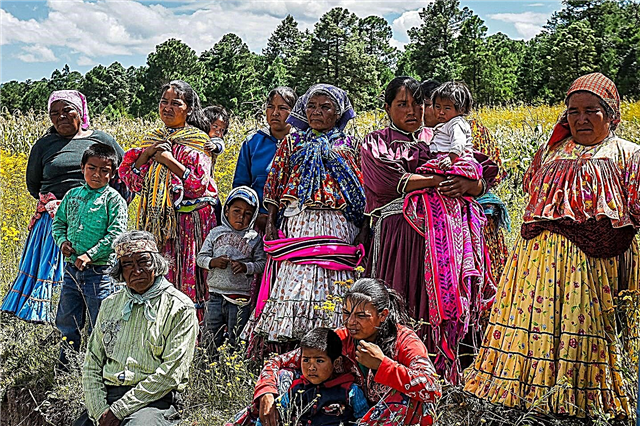 The Tarahumara are a native Mexican ethnic group made up of 122,000 indigenous people who live in the Sierra Madre Occidental, in Chihuahua and parts of Sonora and Durango. They prefer to call themselves rarámuris, which means "those with light feet", a name that honors their indefatigable ability to run long distances.
The Tarahumara are a native Mexican ethnic group made up of 122,000 indigenous people who live in the Sierra Madre Occidental, in Chihuahua and parts of Sonora and Durango. They prefer to call themselves rarámuris, which means "those with light feet", a name that honors their indefatigable ability to run long distances.
Its high altitude habitat in the Sierra Tarahumara contains some of the most impressive abysses in Mexico, such as the Copper, Batopilas and Urique canyons. It is believed that they came through the Bering Strait and the oldest human presence in the sierra has been dated to 15,000 years ago.
Their language belongs to the Yuto-Nahua family with 5 dialects according to geographical location: central Tarahumara, lowland, northern, southeast and southwest. They live in log huts and caves and sleep on pallets or on an animal hide lying on the ground.
Traditions and customs of the Tarahumara
Rarajipari is a game in which the Tarahumara kick and chase a wooden ball for distances that can exceed 60 km. The female equivalent of the rajipari is the rowena, in which women play with interlocking earrings.
The tutugúri is a rarámuri dance by way of thanksgiving, to ward off spells and avoid illnesses and setbacks.
The ceremonial and social drink of the Tarahumara is tesguino, a kind of corn beer.
18. Mays
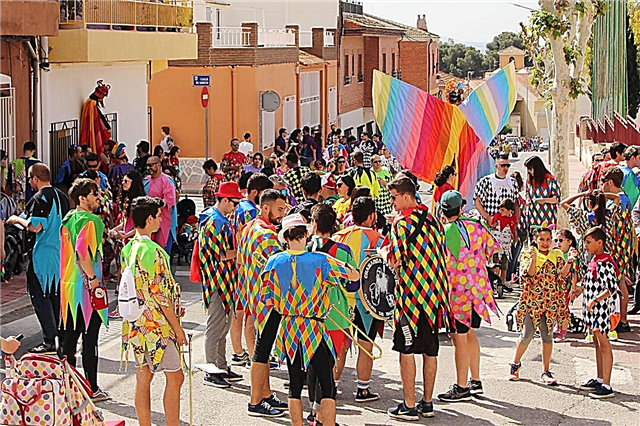 The Mexican Mayo people are in the Mayo Valley (Sonora) and the Fuerte Valley (Sinaloa), in a coastal area between the Mayo and Fuerte rivers.
The Mexican Mayo people are in the Mayo Valley (Sonora) and the Fuerte Valley (Sinaloa), in a coastal area between the Mayo and Fuerte rivers.
The name "May" means "the people of the riverbank" and the population is 93 thousand indigenous people.
As with other ethnic groups, the name that has been imposed for the town is not the one that the indigenous people prefer to use. The Mays call themselves "yoremes", which means, "the people who respect tradition."
Their language is Yorem Nokki, of Uto-Aztec origin, very similar to Yaqui, nationally recognized as an indigenous language.
Its main festivals are Lent and Holy Week, which are staged with all the incidents around the Passion of Christ.
The Yoreme people have a flag designed by an indigenous young man whose name is unknown, which consists of a black deer in a jumping position surrounded by stars on an orange background.
Traditions and customs of the Mays
One of the Mayan myths relates that God created gold for the Yoris and work for the Yoremes.
The dances of the May people represent the animals and their sacrifices to give life to man. They constitute allegories about the free human being in nature.
Its traditional medicine is based on the prescription of natural remedies by healers and the use of amulets, in a mixture of magic with Christian faith.
19. Zoques
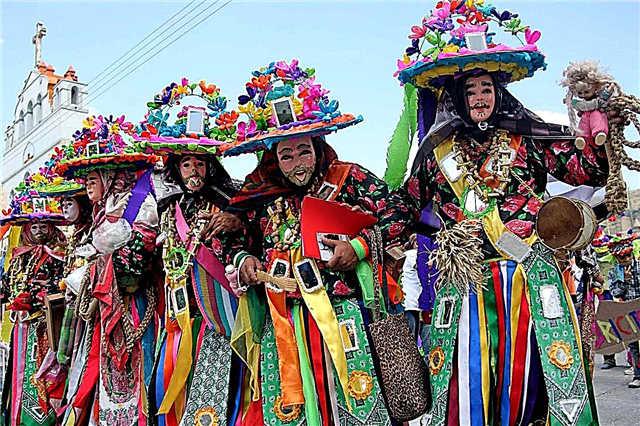 The Zoque people live in 3 areas of the state of Chiapas (Sierra, Central Depression, and Vertiente del Golfo) and in parts of Oaxaca and Tabasco. Its population amounts to 87 thousand indigenous people, who are believed to be descended from Olmecs who emigrated to Chiapas and Oaxaca. The Spanish conquerors subdued them in their encomiendas and decimated them with their diseases.
The Zoque people live in 3 areas of the state of Chiapas (Sierra, Central Depression, and Vertiente del Golfo) and in parts of Oaxaca and Tabasco. Its population amounts to 87 thousand indigenous people, who are believed to be descended from Olmecs who emigrated to Chiapas and Oaxaca. The Spanish conquerors subdued them in their encomiendas and decimated them with their diseases.
The Zoque language belongs to the Mixe-Zoquean linguistic family. The vocabulary and intonation vary slightly according to the area and the community. Their livelihood is agriculture and the raising of pigs and poultry. The main crops are corn, beans, chili peppers, squash, cocoa, coffee, banana, pepper, mamey and guava.
The zoques associate the sun with Jesus Christ. They are very superstitious and when they fall to the ground they assume that it was because the "owner of the land" wants to take over their soul.
The Christian notion of the devil is assimilated by the Zoques to various animals that embody the spirit of evil.
Traditions and customs of the zoques
They have a varied and colorful range of crafts that includes pottery, basketry, marquetry, furniture and other wooden objects.
Una de sus expresiones artísticas más hermosas es la danza de la pesca de las sardinas, originaria de la localidad tabasqueña de Tapijulapa.
El platillo icónico de los zoques es el putzatzé, un caldo espeso a base de vísceras de res, maíz y chiles, popular en las fiestas del Rosario, la Candelaria y Santa Teresa.
20. Chontales de Tabasco
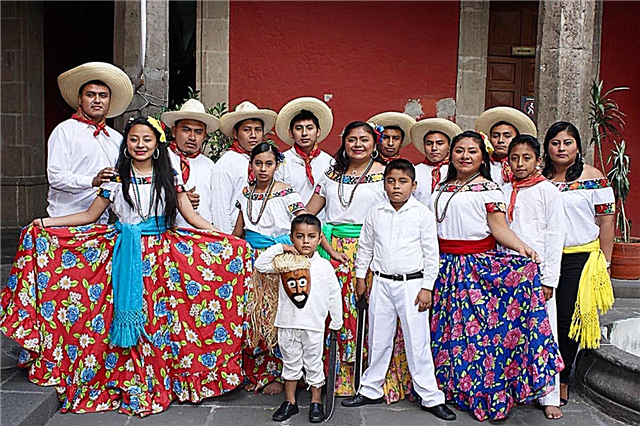 Son un pueblo nativo tabasqueño formado por 80 mil indígenas de origen maya, que viven en los municipios de Nacajuca, Centla, Jalpa de Méndez, Macuspana y Centro.
Son un pueblo nativo tabasqueño formado por 80 mil indígenas de origen maya, que viven en los municipios de Nacajuca, Centla, Jalpa de Méndez, Macuspana y Centro.
Los mexicas llamaban “chontal” (“extranjero”) a todos los demás pueblos, por lo que el nombre de la etnia proviene del náhuatl.
Los chontales de Tabasco se autodenominan “hombres verdaderos” (“yoko yinikob”) y “mujeres verdaderas” (“yoko ixikob”). Su idioma (yokot’an) se traduce como “la lengua verdadera”, uno de la familia mayense perteneciente a la sub-familia de lenguas cholanas, de la que forman parte también el chol y el chortí.
Los chontales de Tabasco son firmes creyentes de los duendes, a los que llaman “yumkap”, que significa, “dueño de la tierra”, “diablillos” que cautivan especialmente a los niños a los que hacen perder el camino y extraviarse.
Tradiciones y costumbres de los chontales de Tabasco
Con la evangelización cristiana durante la conquista y la época colonial muchos pueblos prehispánicos americanos fusionaron sus deidades con las principales figuras del cristianismo.
Para los chontales, Ix Bolom es una diosa prehispánica que vive en el centro del océano ejerciendo como dueña de los espíritus y de los animales. Con el sincretismo religioso, Ix Bolom fue asociada a la Virgen María.
Los chontales son muy aficionados al pozol, original y refrescante bebida prehispánica a base de cacao y maíz.
El tambor y el sombrero chontal son dos de las artesanías más apreciadas de este pueblo indígena mexicano.
21. Popolucas
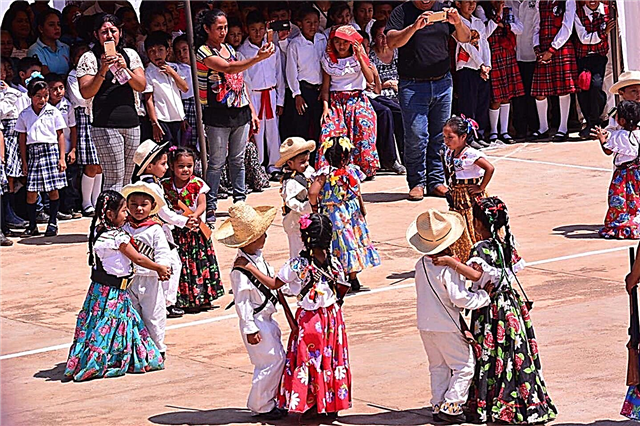 Los 63 mil indígenas popolucas mexicanos habitan en el Istmo de Tehuantepec, entre los estados de Veracruz y Oaxaca. El término “popoluca” es confuso e incluso, peyorativo, ya que fue aplicado por los aztecas de modo parecido a la palabra “bárbaro” en Europa en tiempos de griegos y romanos.
Los 63 mil indígenas popolucas mexicanos habitan en el Istmo de Tehuantepec, entre los estados de Veracruz y Oaxaca. El término “popoluca” es confuso e incluso, peyorativo, ya que fue aplicado por los aztecas de modo parecido a la palabra “bárbaro” en Europa en tiempos de griegos y romanos.
Los popolucas hablan una lengua mixe-zoqueana y al igual que los mixes, provienen de los olmecas. Aunque comparten el idioma, estos indígenas no manifiestan una particular identidad étnica.
Se distinguen dos dialectos, el popoluca de Texistepec, también llamado zoque de Texistepec y el popoluca de Sayula de Alemán y Oluta.
Obtienen el sustento de los animales domésticos y de la agricultura cultivando maíz, calabaza, frijol, jitomate, piña, camote, chayote, café y frutas.
Su religión es una mezcla de creencias ancestrales. Creen en espíritus dañinos que viven en sitios específicos y pueden causar la muerte. Los brujos y los curanderos forman parte de la cotidianidad.
Tradiciones y costumbres de los popolucas
La mujer da a luz acuclillada con la ayuda de su marido y la partera. Son severos con los niños de mal comportamiento castigándolos al hacerlos respirar el humo de chiles quemados.
Sus principales artesanías son cerámicas, tejidos de palmas, faldas de algodón, canastas y cunas colgantes.
Las mujeres visten típicamente una blusa de manta de cuello redondo o cuadrado y una falda de abrigo. Los hombres llevan pantalón y camisa de muselina. Calzan huaraches o van descalzos.
22. Chatinos
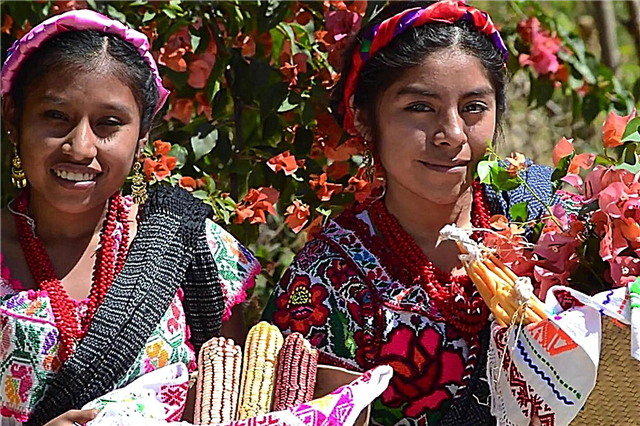 Los más de 60 mil indígenas chatinos de México habitan en el suroeste de Oaxaca, cerca de la costa. Son muy próximos a los zapotecas en cultura y lengua.
Los más de 60 mil indígenas chatinos de México habitan en el suroeste de Oaxaca, cerca de la costa. Son muy próximos a los zapotecas en cultura y lengua.
El chatino o cha’cña es una lengua zapotecana de la familia otomangue de la que se distinguen varios dialectos, entre estos, chatino de Zenzontepec, chatino de Tataltepec y chatino del este.
El pueblo chatino se dedica a la agricultura de manera autónoma o como trabajadores en las plantaciones de café y otros rubros.
La mayoría de las comunidades chatinas cuentan con servicios públicos, incluyendo institutos educativos bilingües.
Su organización política se basa en cargos civiles y religiosos. La máxima autoridad es un consejo de ancianos y creen en el Santo Padre Dios, la Santa Madre Tierra, la Santa Abuela, la Santa Madre Luna y en los dioses del viento; también en el agua, la lluvia, el fuego y la montaña.
Tradiciones y costumbres de los chatinos
Una de sus celebraciones más importantes es la del Día de Muertos, cuando y según sus creencias, las almas de los fallecidos retornan a la vida.
Caramelos, frutas, moles, tamales, velas, cráneos y esqueletos, forman parte de la variopinta gama de cosas utilizadas en la festividad.
En la vestimenta de la mujer predominan las blusas multicolores bordadas con adornos de ganchillo y las faldas largas. Las piezas de los hombres son principalmente de algodón blanco.
La danza y la música son artes importantes en la cultura y forman parte de sus ceremonias. Los instrumentos musicales tradicionales son flautas, tambores y cascabeles.
23. Amuzgos
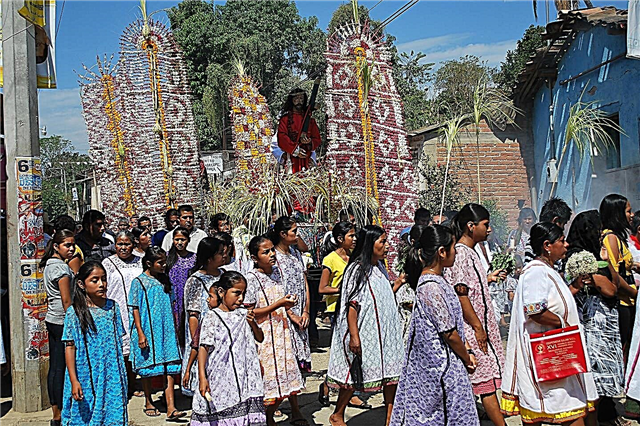 Los amuzgos integran un grupo étnico de 58 mil indígenas que viven en la zona montañosa de Guerrero y Oaxaca.
Los amuzgos integran un grupo étnico de 58 mil indígenas que viven en la zona montañosa de Guerrero y Oaxaca.
“Amuzgo” quiere decir “lugar donde hay dulces” y la lengua del mismo nombre es de origen otomangue. Un alto porcentaje de indígenas habla solo la lengua nativa, el resto es bilingüe.
Viven de la pesca, agricultura de subsistencia y de la elaboración de artesanías como cerámicas, tejidos y bordados. Son conocidos por sus complejos diseños artesanales en los que representan figuras geométricas y animales pequeños.
Practican ritos precolombinos relacionados con la siembra, el éxito de la cosecha y la protección de ríos, montañas, cuevas y otras formaciones naturales.
Las casas en los pueblos suelen ser rectangulares con paredes de adobe, mientras que en las aldeas son circulares con paredes de barro y techos de palma.
En las paredes cuelgan los utensilios de cocina y las herramientas de trabajo. Las comunidades más rurales carecen de electricidad, agua potable y servicios de drenaje.
Tradiciones y costumbres de los amuzgos
Las expresiones musicales varían de un enclave a otro, destacando el sonecillo de tierra caliente, el fandango y el pan de jarabe.
Entre las danzas sobresalen los tlacololeros, los viejitos, los tecuanes, los manueles y los doce pares de Francia.
Las mujeres visten huipiles y faldas de percal decoradas con tiras de friso en colores brillantes y contrastantes, como turquesa sobre amarillo y rosa o verde sobre azul.
La base social de los amuzgos es la familia (nuclear y extendida). Es frecuente que la mano de la novia sea solicitada por un intermediario de prestigio. La edad usual de casamiento es de 17 y 15 años para varones y hembras, respetivamente.
24. Tojolabales
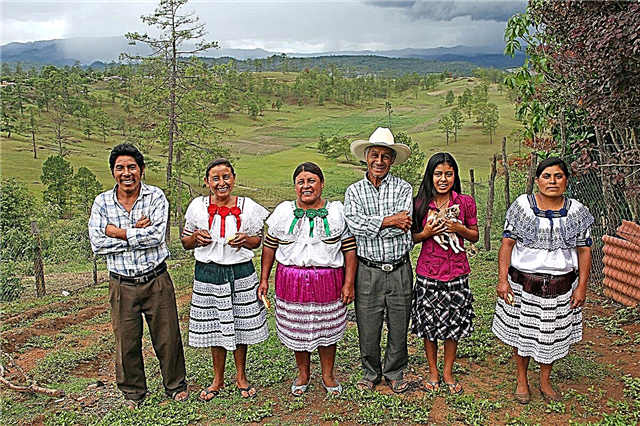 Hay unos 55 mil indígenas tojolabales en México que viven en Chiapas, cerca de la frontera con Guatemala. Su principal asentamiento es la ciudad de Comitán de Domínguez, donde constituyen la población mayoritaria.
Hay unos 55 mil indígenas tojolabales en México que viven en Chiapas, cerca de la frontera con Guatemala. Su principal asentamiento es la ciudad de Comitán de Domínguez, donde constituyen la población mayoritaria.
Su lengua es mayense y “tojolabal” significa, “palabra que se escucha sin engaños” o “discurso recto”. Por tanto, los tojolabales se llaman a sí mismos “hombres de palabra recta”. Tienen varios discursos o maneras de comunicarse que incluyen el habla cotidiana, el silbido, el habla grande y la sagrada habla.
Su entorno natural es la Selva Lacandona que cuenta con fincas privadas en los valles fértiles, mientras que la mayoría de las aldeas indígenas se sitúan en áreas montañosas y rocosas de menor productividad agrícola. La escasez de tierras cultivables ha alimentado la conflictividad social en la zona.
Tradiciones y costumbres de los tojolabales
Uno de sus ritos fundamentales es el del equilibrio personal, en el que los individuos realizan un ceremonial privado con la ayuda de un hechicero para restaurar su armonía interior.
Tanto hombres como mujeres usan vestimentas de colores brillantes, aunque la ropa femenina es más vistosa y con mayor cantidad de accesorios.
La ropa occidental como las camisas con botones ya son frecuentes en la vestimenta, aunque muchos indígenas siguen rechazando el calzado y prefieren trabajar y andar descalzos.
La religión y las creencias son componentes importantes de la vida cotidiana de los tojolabales. Los hechiceros se especializan en dos campos: curación y brujería. Los curanderos prueban la sangre de la persona enferma para ver si la dolencia es una enfermedad corporal o un castigo de Dios.
25. Huicholes
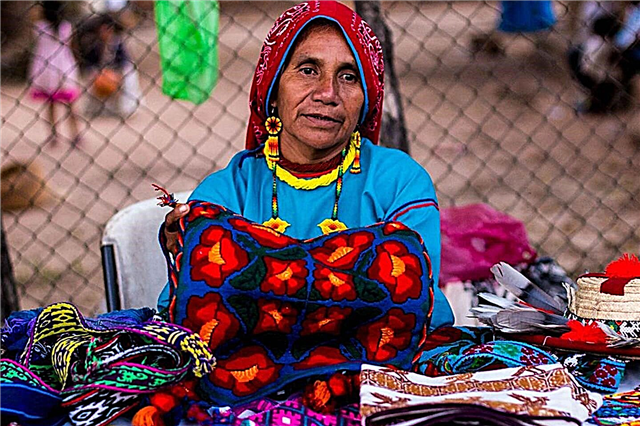 Los huicholes o wixárikas son un pueblo nativo mexicano que habita en la Sierra Madre Occidental en el estado de Nayarit y áreas serranas de Jalisco, Zacatecas, San Luis Potosí y Durango.
Los huicholes o wixárikas son un pueblo nativo mexicano que habita en la Sierra Madre Occidental en el estado de Nayarit y áreas serranas de Jalisco, Zacatecas, San Luis Potosí y Durango.
El nombre “huichol” es la españolización de una voz náhuatl, mientras que el término “wixárika” es del idioma nativo que significa “la gente”.
El idioma de los huicholes, llamado “wixaritari”, pertenece al grupo de lenguas uto-aztecas y está emparentado con el grupo nahua o aztecoide.
La religiosidad tradicional de los huicholes incluye el uso del peyote, un cactus alucinógeno que crece en esa parte de la sierra.
Su religión es una mezcla de creencias animistas y nativistas, con fuerte arraigo precolombino y relativamente poca influencia del catolicismo.
Tienen 4 deidades mayores: el maíz, el ciervo, el águila y el peyote, a las que consideran descendientes del sol.
Su principal centro religioso es el monte Quemado (San Luis Potosí) dividido en dos lados, uno para los hombres y otro para las mujeres.
Tradiciones y costumbres de los huicholes
El arte huichol es uno de los más famosos de México, especialmente por sus bellos cuadros de estambre. Los diseños huicholes son de fama mundial y tienen significados tanto culturales como religiosos.
Las mujeres huicholes visten un traje típico sencillo con una blusa corta color amapola, enaguas (manto floreado que cubre la cabeza) y collares de chaquira. Los hombres usan pantalón y camisa de manta blanca con bordados de algodón, capa y sombrero de palma con bolas de estambre o adornos de chaquira.
26. Tepehuanes
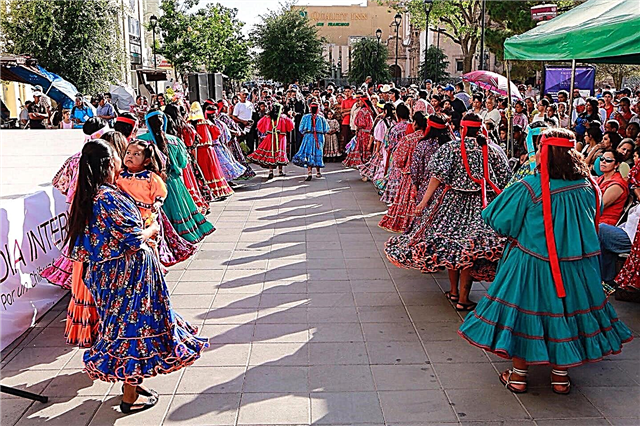 Los tepehuanes o tepehuanos son uno de los muchos pueblos indígenas de México que en su religión mezclan el cristianismo con elementos nativos prehispánicos.
Los tepehuanes o tepehuanos son uno de los muchos pueblos indígenas de México que en su religión mezclan el cristianismo con elementos nativos prehispánicos.
Hay 2 grandes ramas de esta etnia de 38 mil indígenas; los tepehuanes del norte, que viven en Chihuahua y los del sur, asentados en Durango, Jalisco y Nayarit. Ambos grupos hablan una lengua muy parecida perteneciente a la familia lingüística uto-azteca.
Los del norte siguen con más apego las tradiciones cristianas, mientras que en todas las comunidades las figuras católicas (Dios, Jesús, la Virgen y el santoral) se mezclan con otros entes divinos como el espíritu de la montaña, el dios del ciervo y la estrella de la mañana.
En los dos pueblos, el chamán ejerce la función de guía espiritual dirigiendo los ritos sagrados y las fiestas religiosas.
La dieta de los tepehuanes se basa en la caza, pesca y agricultura. Cazan venados, armadillos y conejos; pescan bagres, truchas de río y camarones; y cosechan frijoles, maíz, papas y jitomates. De los animales domésticos obtienen leche, queso y huevos.
Tradiciones y costumbres de los tepehuanes
Los tepehuanes del norte construyen sus casas con ayuda de toda la comunidad, recibiendo solo la comida y las bebidas. Las tesguinadas son habituales en estos trabajos grupales.
Los tepehuanes del sur celebran a principios de octubre el festival del elote tierno, una ceremonia no cristiana para agradecer el éxito de la cosecha.
Visten usualmente ropa comercial y el traje típico en ocasiones especiales. La vestimenta tradicional de la mujer consta de falda, blusa y mandil de satén en piezas muy coloridas y decoradas con encajes y listones. También llevan un rebozo negro y calzan huaraches.
Los hombres usan calzón y camisa manga larga de tela de manta, pañuelo atado al cuello, sombrero de palma de ala ancha y huaraches.
27. Triquis
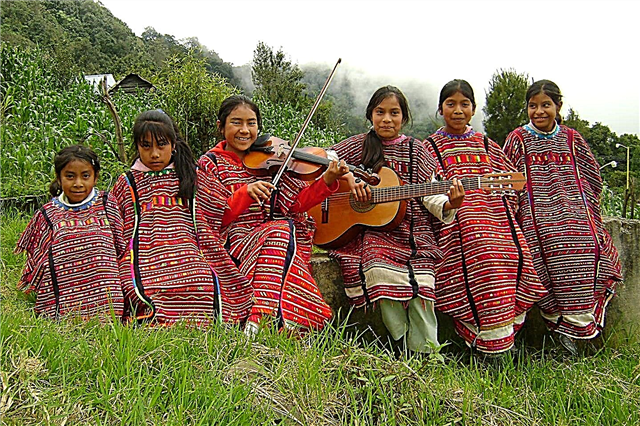 El pueblo triqui vive en el noroeste de Oaxaca, formando un atípico enclave cultural de 29 mil indígenas en medio de un amplio territorio mixteco. Su lengua pertenece a la familia mixtecana, que a su vez forma parte de la gran familia lingüística otomangue.
El pueblo triqui vive en el noroeste de Oaxaca, formando un atípico enclave cultural de 29 mil indígenas en medio de un amplio territorio mixteco. Su lengua pertenece a la familia mixtecana, que a su vez forma parte de la gran familia lingüística otomangue.
Se conocen 4 dialectos triquis hablados en los 4 asentamientos principales (San Juan Copala, San Martín Itunyoso, San Andrés Chicahuaxtla y Santo Domingo del Estado).
Fueron evangelizados por los dominicos y son esencialmente católicos, aunque conservan tradiciones religiosas no cristianas como la veneración de la naturaleza, los astros y los fenómenos astronómicos.
Festejan a los santos católicos patronos que generalmente le dan nombre a las localidades, así como el Carnaval cuando exhiben sus danzas típicas.
Una fiesta pagana que está siendo rescatada en Santo Domingo del Estado es la del Dios Rayo, celebrada el 25 de abril en la Cueva del Rayo donde creen que vive la deidad.
Tradiciones y costumbres de los triquis
Uno de los principales símbolos de la cultura triqui son los huipiles rojos tejidos con gran destreza por las indígenas, actividad enseñada a las niñas desde corta edad. Otras artesanías son alfarería, sombreros, petates y tenates.
La pieza de vestir infaltable en la mujer triqui es su huipil rojo hecho en telar de cintura. La música triqui es ejecutada con guitarra y violín, aunque en San Juan Copala incorporan tambor y un instrumento de viento parecido a una flauta de pan.
28. Coras
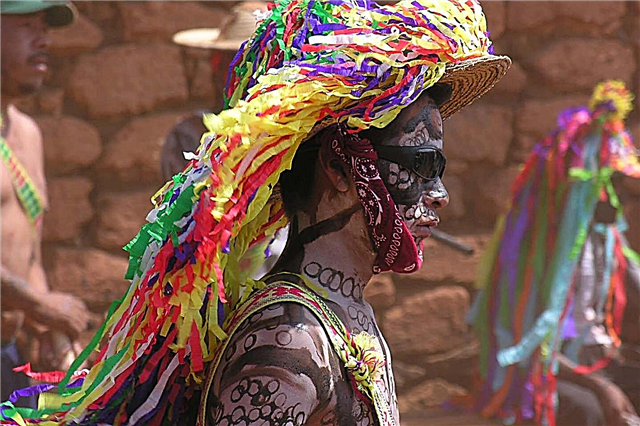 Los coras son 25 mil indígenas mexicanos concentrados en el municipio El Nayar, al este de Nayarit, aunque también hay comunidades en Jalisco. Se autodenominan “nayeeri”, voz de la que proviene el nombre del estado. Hablan el idioma nayeri emparentado con el huichol y de forma lejana con el náhuatl.
Los coras son 25 mil indígenas mexicanos concentrados en el municipio El Nayar, al este de Nayarit, aunque también hay comunidades en Jalisco. Se autodenominan “nayeeri”, voz de la que proviene el nombre del estado. Hablan el idioma nayeri emparentado con el huichol y de forma lejana con el náhuatl.
Es común que entre sí se comuniquen en su lengua, aunque también emplean un dialecto formado por nayeri, español moderno y español antiguo. Su religión mezcla cristianismo con creencias prehispánicas. Tayau representa al sol, que a mediodía se sienta en una silla de oro a fumar su pipa, cuyo humo son las nubes.
Viven de la agricultura y de la crianza de animales. Los rubros más sembrados son maíz, frijol, melón, calabaza, sandía, cacahuate, caña de azúcar, pepino, jitomates, chiles y nabo mexicano (jícama). Crían vacas, ovejas, cabras, puercos, caballos, mulas y aves de corral.
Tradiciones y costumbres de los coras
Mantienen una relación estrecha con la naturaleza y consideran que su territorio, de cerca de 120 mil hectáreas, es sagrado. Varias de sus fiestas persiguen que los dioses, espíritus, animales y plantas, renazcan y renueven el ciclo vital.
Producen algunas artesanías como morrales de lana, fibras sintéticas y algodón, sombreros de yute y huaraches de cuero con suelas de neumáticos.
La vestimenta es muy sencilla. Las mujeres usan falda y blusa, mientras que los hombres visten calzón de manta, camisa, sombrero y huaraches.
29. Etnia Mam
Los mames son un pueblo indígena de origen maya que habita en Chiapas y Guatemala. En México, su población asciende a 24 mil indígenas que durante la época prehispánica formaron un señorío de límites y organización no precisada, que tuvo a Zaculeu, en el altiplano occidental de Guatemala, como capital.
Opusieron gran resistencia a los conquistadores españoles, aunque finalmente fueron sitiados y doblegados por Gonzalo de Alvarado. Hablan la lengua mam, de entronque maya, el tercero más usado actualmente entre los idiomas de familia maya, ya que es hablado por 500 mil indígenas guatemaltecos.
Su religión incluye elementos cristianos y creencias ancestrales. Celebran a sus santos católicos y realizan ceremonias como la de la lluvia.
La principal figura sacerdotal es el chiman (abuelo) que ejerce de intermediario entre la población seglar y el mundo sobrenatural. Son sacerdotes y adivinos, pero no brujos.
Tradiciones y costumbres de los mames
La mayor parte de la población activa trabaja en la crianza de animales domésticos y en la agricultura, sembrando y cosechando maíz, frijol, chilacayote y papas.
Otras ocupaciones importantes son los músicos marimbistas que animan el consumo de licor en los estancos, los mueleros (extractores de muelas), los rezadores y los castradores de animales.
Las mujeres visten una blusa llamada costurina o una camisa de manga corta. Los vestidos elegantes suelen ser de color amarillo con franjas rojas. El traje típico masculino es calzón de manta, camisa, faja y pañuelo rojo, sombrero de palma y huaraches.
30. Yaquis
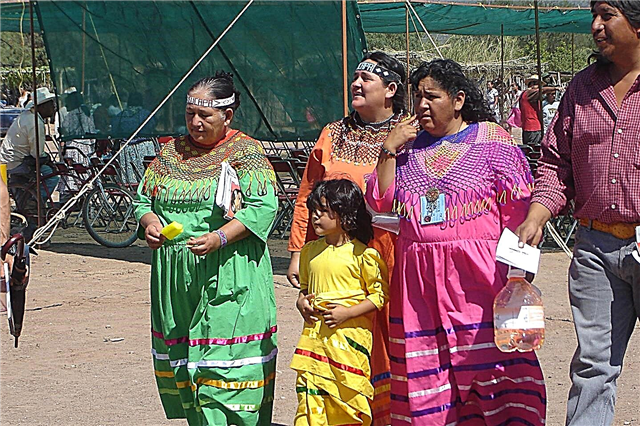 Son indígenas de Sonora que se asentaron en las riberas del río Yaqui. Actualmente suman unos 23 mil que viven en su zona tradicional y formando colonias en las ciudades sonorenses.
Son indígenas de Sonora que se asentaron en las riberas del río Yaqui. Actualmente suman unos 23 mil que viven en su zona tradicional y formando colonias en las ciudades sonorenses.
La Matanza, Sarmiento y El Coloso, son asentamientos de la ciudad de Hermosillo conocidos como los “barrios yaquis”.
Hablan la lengua yaqui o yoem noki, de la familia uto-azteca, tan parecida al idioma mayo que tienen un 90 % de mutua inteligibilidad.
Sus escuelas primarias y secundarias son bilingües (yaqui/español). Crían ganado, pescan (especialmente en Puerto Lobos) y cultivan la tierra, principalmente trigo, soya, alfalfa, cártamo, hortalizas y forrajes.
Fueron evangelizados por los jesuitas y son esencialmente católicos, realizando sus ritos en latín. Su principal festividad religiosa es la Cuaresma en la que escenifican la Pasión de Cristo incluyendo a intérpretes que encarnan a Cristo, Poncio Pilatos, los fariseos y los romanos, representación con música de flautas y tambores.
Tradiciones y costumbres de los yaquis
Las danzas forman parte de las tradiciones más antiguas del pueblo yaqui. En la danza de la pascola tres hombres bailan con el torso descubierto mientras suenan unos cascarones de orugas secas sujetos a sus piernas. El baile es acompañado con música de arpa, violín e instrumentos de percusión.
La danza del venado es una representación de la cacería del animal acompañada con música de arpa y violín. La danza de pajkolas usualmente precede a la del venado y su música se ejecuta con tambor y una flauta típica yaqui.
Pueblos indígenas de México mapa
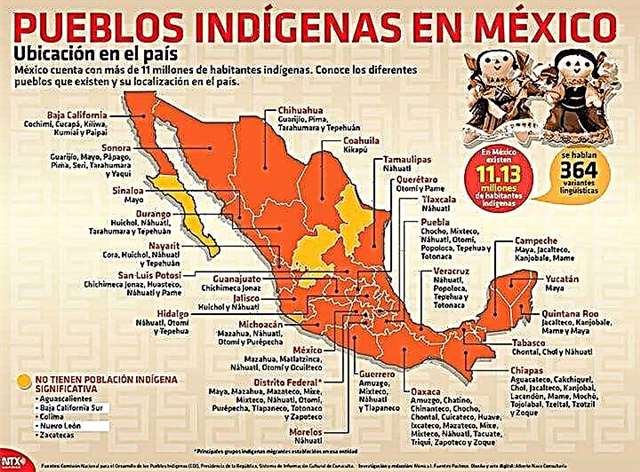
Características de los pueblos indígenas de México
En México hay 56 grupos étnicos que agrupan una población de aproximadamente 15 millones de indígenas.
La diversificación lingüística es una de las características más notorias de los amerindios mexicanos, distinguiéndose más de 100 lenguas, aunque este número varía con los criterios de clasificación utilizados.
Parte importante de esta población son los pueblos indígenas mayas, herederos de una de las civilizaciones nativas americanas más fascinantes.
Pueblos indígenas mexicanos
Pueblos indígenas definición: son los que presentan una identidad étnica basada en su origen, historia, lengua, cultura, instituciones y tradiciones. Pueden ser definidos como pueblos autóctonos que provienen de las sociedades originales de un país o territorio.
Pueblos indígenas de México pdf: el siguiente documento pdf, obra de Federico Navarrete Linares, editada por la Comisión Nacional para el Desarrollo de los Pueblos Indígenas, contiene valiosa información sobre la historia y actualidad de los pueblos indígenas mexicanos.
Esperamos que te haya gustado este artículo sobre los pueblos indígenas de México. Te invitamos a compartirlo con tus amigas y amigos de las redes sociales.
